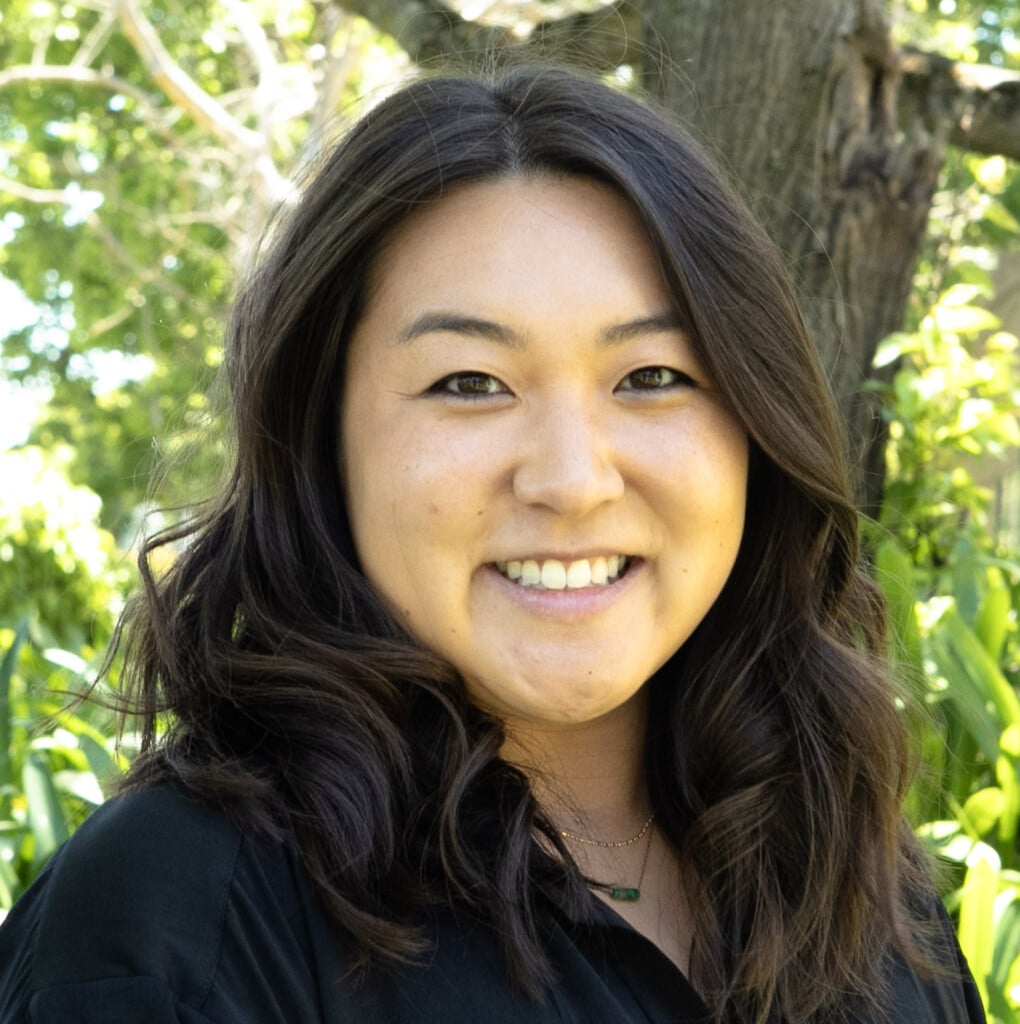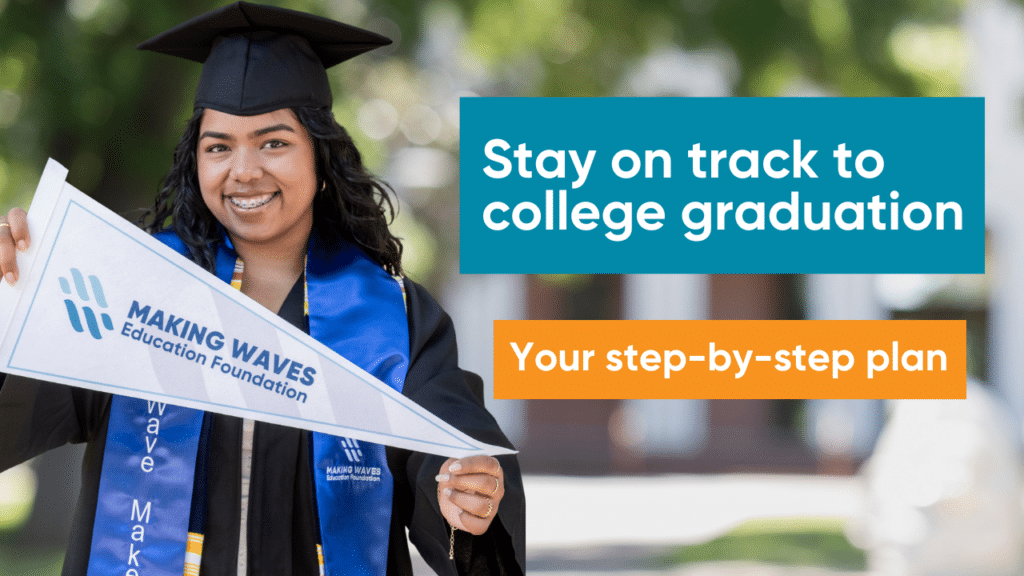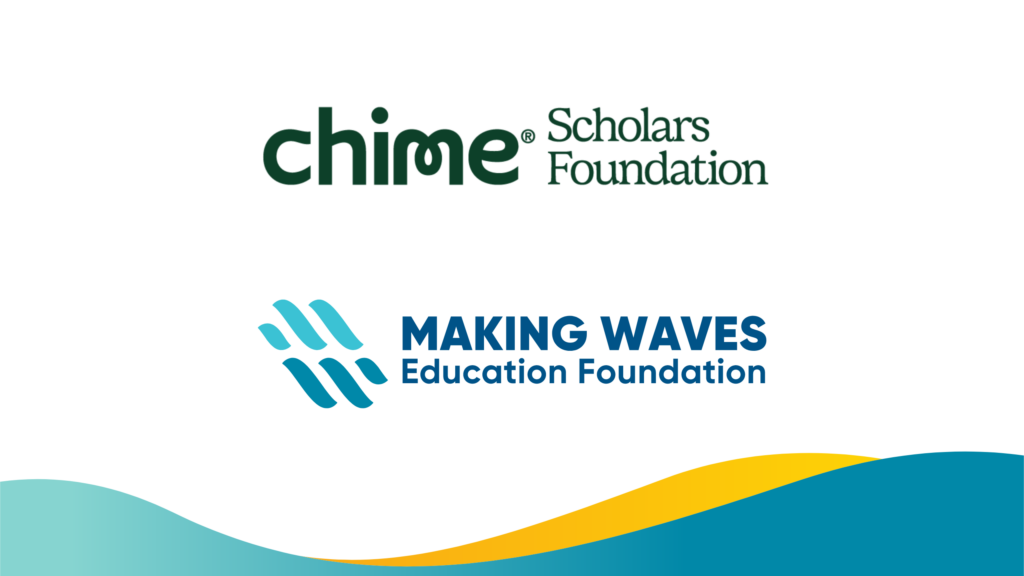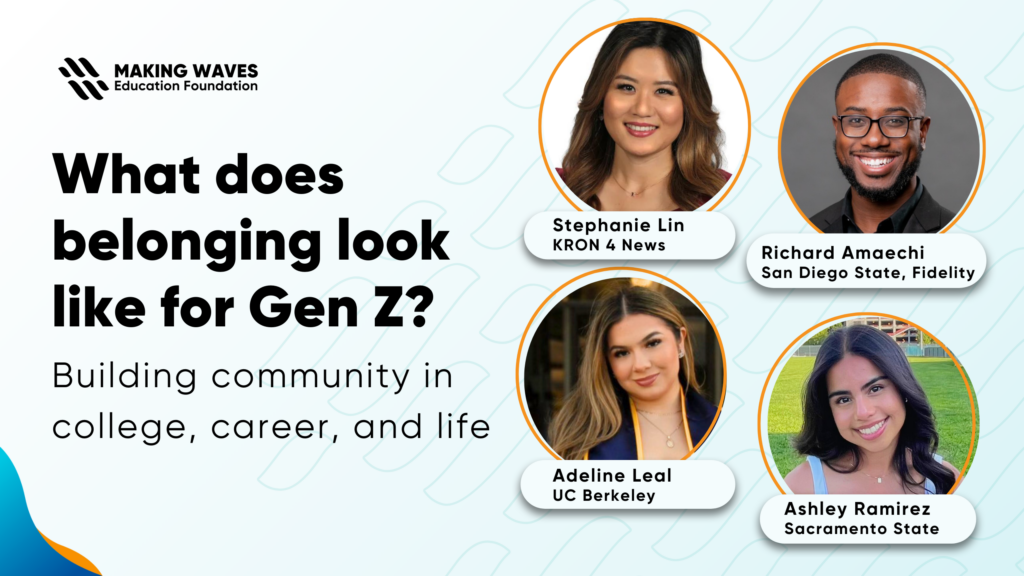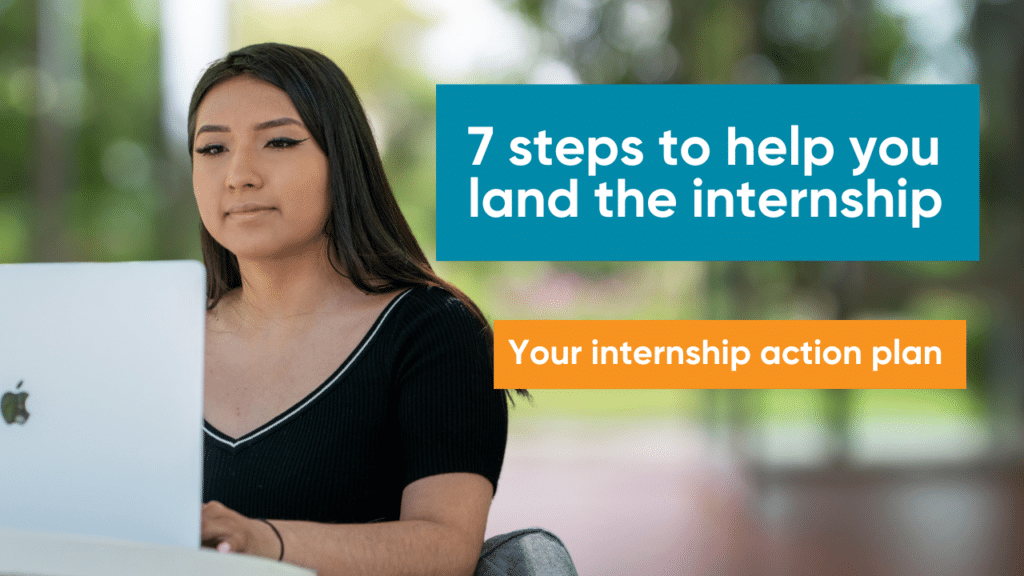
Seven steps you can take now to land the internship
Internships have a wide range of positive long-term implications. For example, Strada Education Foundation found that:
- a year after graduation those who had completed a paid internship during their undergraduate education were earning $3,000 more than their non-internship participating peers, and
- among graduates from the past 20 years, those who participated in work-based learning such as an internship or apprenticeship are significantly more likely to be satisfied with their careers, report higher annual income, and believe their education was worth the cost.
Unfortunately, there are an array of obstacles that make it challenging to apply to internships such as a heavy course load, already having a job, uncertainty in how to find an internship, transportation, and more.
However, internships are incredibly important to your career journey, and you have Making Waves in your corner, ready to offer you support to navigate these challenges.
Your Internship and Job Application Plan in Action
When applying to internships and job applications it helps to have a plan. Once you’ve done your job or internship preparation like updating your master resume and LinkedIn and you’ve created your search strategy such as creating a schedule, setting goals, and determining titles and keywords to search, it’s time to put your plan into action!
This resource contains steps to take as you begin your job or internship search.
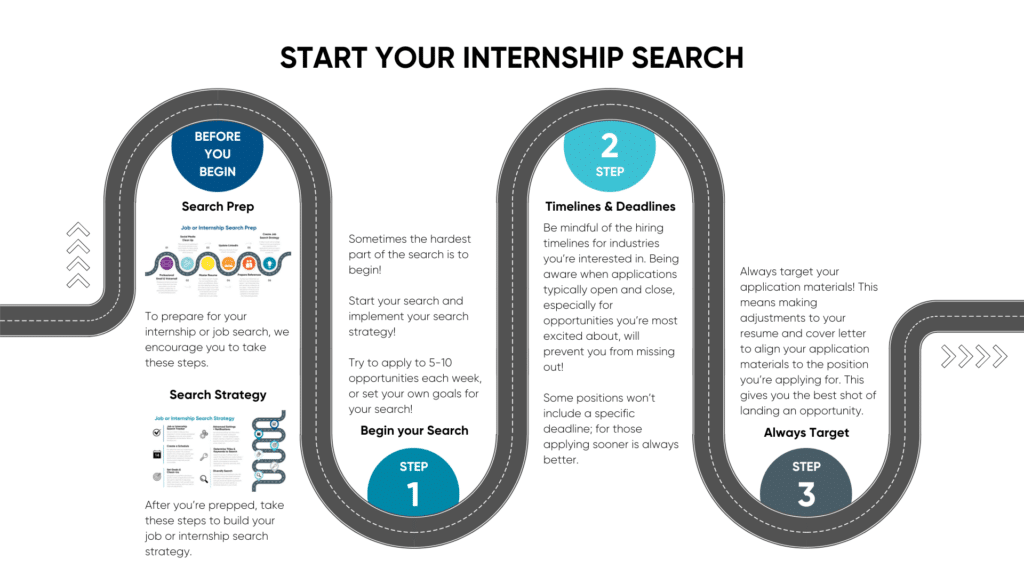
Step 1: Begin your search
Sometimes the hardest part of the search is to begin! Start your search and implement your search strategy. We suggest applying to at least 5-10 internships per week during internship season. This might seem like a lot but it’s important to keep a consistent pace when applying. Since there are many applicants, applying to 5-10 internships will provide you a better chance of landing one.
💡 Fact: Hispanic students from 2- and 4-year programs and Black students from 2-year programs are most likely to miss out on internships primarily because they did not apply.
Step 2: Be mindful of timelines and deadlines
Be mindful of the hiring timelines for each industry you’re interested in. Being aware when applications typically open and close, especially for opportunities you’re most excited about, will prevent you from missing out! Be proactive! Applying sooner rather than later will always benefit you.
💡 Fact: According to Indeed.com, WayUp, and many other resources, most applications for summer internships open between November and January. And according to Indeed.com, most job postings stay active for 30 days, and the optimal time to apply is within the first one to two weeks of it being posted.
📚 Resource: Refer to the “the hiring cycle and timeline” section of this “Your internship and job search roadmap” article for a general timeline.
Step 3: Always target your application materials
Always target your application materials! This means making adjustments to your resume and cover letter to align your application materials to the position you’re applying for. This gives you the best chance of landing an opportunity.
📚 Resource: How to Write a Targeted Resume
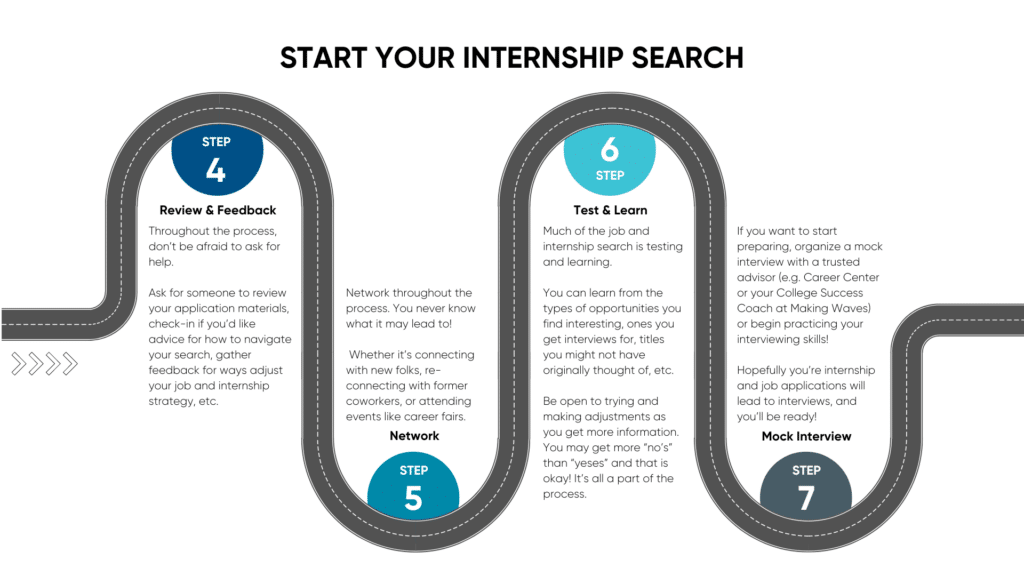
Step 4: Seek reviews and ask for feedback
Throughout the process, don’t be afraid to ask for help. Here are areas you could ask for feedback:
- Review your application materials
- Provide advice on how to navigate your job search
- Provide feedback on ways you could adjust your job and internship strategy
Step 5: Network
Network throughout the process. You never know what it may lead to! Whether it’s connecting with new folks, re-connecting with former coworkers, asking for informational interviews, or attending events like career fairs.
Here are some folks who could support you:
- Your Making Waves College Success Coach or the Making Waves Early Career and Alumni Team
- Counselor at your university’s career center
- A mentor
- Peers or college grads who are older than you who have had an internship before
📚 Resource: Check out this Informational Interviews Tip Sheet
Step 6: Make adjustments
Much of the job and internship search is testing and learning. You can learn from the types of opportunities you find interesting, ones you get interviews for, titles you might not have originally thought of, and more. Be open to trying new approaches and making adjustments as you get more information. You may get more “nos” than “yeses” and that’s okay! It’s all a part of the process. Challenges offer lessons!
📚 Resource: So, You Didn’t Get the Internship. Now What?
Step 7: Set up a mock interview
One of the best ways to prepare for your interview is to organize a mock interview with a trusted advisor (e.g. your college campus’ career center or your college success coach at Making Waves) or begin practicing your interviewing skills! Hopefully your internship and job applications will lead to interviews, and you’ll be ready!
➡️ Are you a Wave Maker? Do you want some support with your internship or job search? Schedule time to meet with our Making Waves Early Career Team by completing this form.
Kaitlyn Endo
ABOUT MAKING WAVES Education FOUNDATION
At Making Waves, we are committed to educational equity. Making Waves Education Foundation is a Bay Area nonprofit that supports Making Waves Academy – a public charter school with more than 1,100 5th through 12th grade students – and leads college and career programming with more than 430 college students.
Knowing the opportunities that come with a college degree, we partner with historically underrepresented and underserved students to help make college affordable and graduation attainable. Centering the journeys of our students, our personalized approach includes college and career coaching, scholarships, and financial planning.
Our alumni network includes more than 730 college graduates, who earn their degrees and land jobs at more than twice the rate of their first-generation, low-income peers, with 85% graduating debt-free.
Related News and Resources
Seven steps you can take now to land the internship
October 1, 2024
Five steps to stay on track to college graduation
October 1, 2024
🎙️ Panel: What does belonging look like for Gen Z?
September 25, 2024

